
The air cargo market's volatility makes developing a reliable and sustainable air shipping strategy increasingly challenging.
With air freight capacities fluctuating and market conditions being unpredictable, shippers and manufacturers need more efficient ways to develop sustainable air freight shipping solutions. The best way to accomplish this is through reliable and comprehensive data.
Data is a powerful tool for anyone creating a successful air shipment strategy or who is working in air cargo procurement. By leveraging historical air cargo market data and establishing appropriate benchmarks, businesses can achieve significant cost savings and optimize their shipping efficiency.
Traditionally, shippers and manufacturers have relied on freight forwarders to identify the best air freight shipping options. However, with tighter profit margins, businesses can’t rely solely on third parties to dictate essential and potentially costly supply chain elements. Fortunately, today’s companies can access historical data on air freight shipments, giving them the appropriate insight to understand the market better and find optimal solutions for their business.
Here’s an example of what that can look like.
The COVID-19 pandemic led to travel restrictions that grounded most passenger carriers with air cargo capacity within the aircraft. This reduced the available cargo capacity worldwide with reverberating effects through the entire air cargo supply chain, leading to skyrocketing rates for air freight shipments. As the data shows, freight capacity in passenger carriers dropped significantly in April 2020. It had not reached pre-COVID capacity, even a year later:
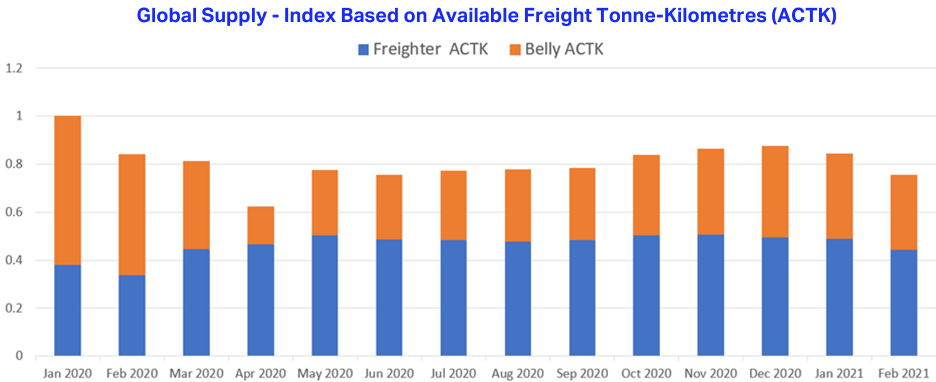
Source: IATA CargoIS
While all shippers and manufacturers faced the same problem, those with access to reliable data could gain the insight needed to make more informed decisions when building an effective shipping strategy during uncertain times. By looking at historical trends, you could better understand their current circumstances:
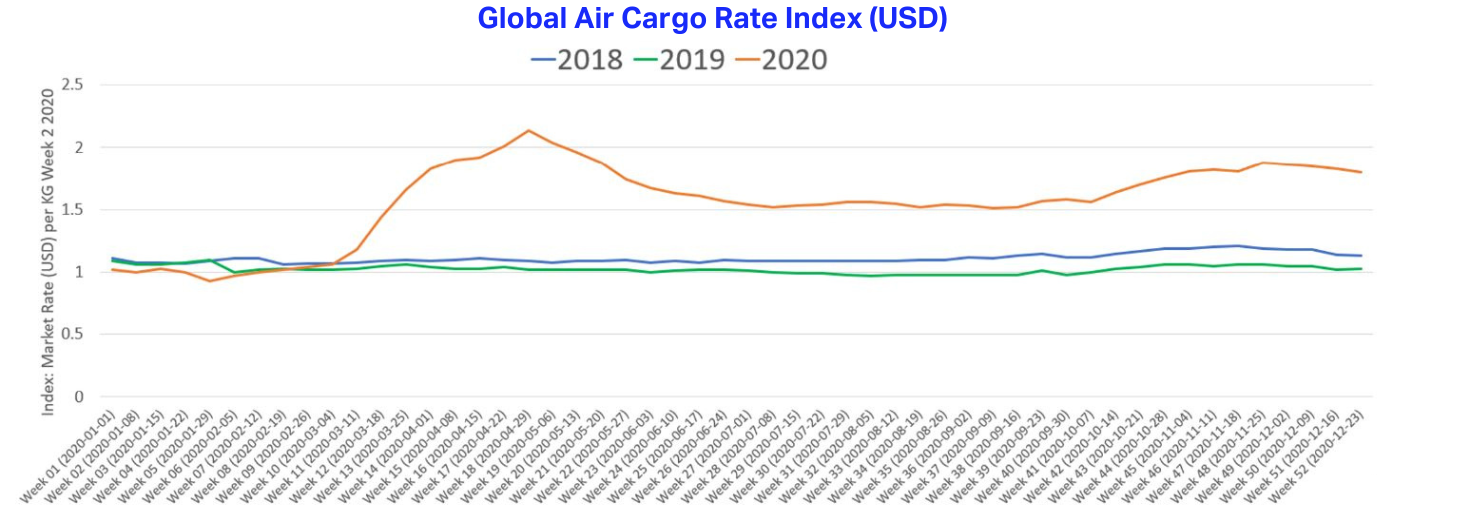
Source: IATA CargoIS
By monitoring air cargo rates and the growth in weight transported for destination airports near one another, they could identify alternative trade lanes to meet their shipping needs and expected rates for air cargo. In this case, the data showed that Liège Airport (LGG) was the best option for businesses wanting the optimal shipping route for HKG-EU.
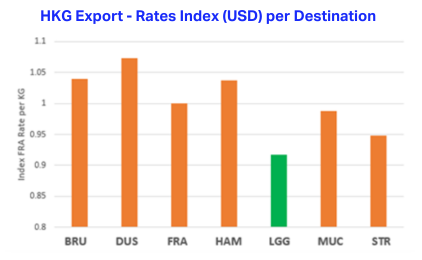
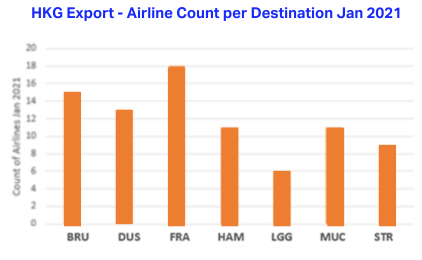
Source: IATA CargoIS
Understanding market trends makes for better-informed decision-making. But being able to explore your options with appropriate benchmarking and monitoring also evens the playing field when negotiating with freight forwarders.
For example:
In April 2020, a shipper identified the HKG-AMS as the best option for consumer shipments to the EU. While they expect increased costs, they are still shocked by freight forwarders’ quoted rates.
The shipper needs an objective perspective, so they look at the data:
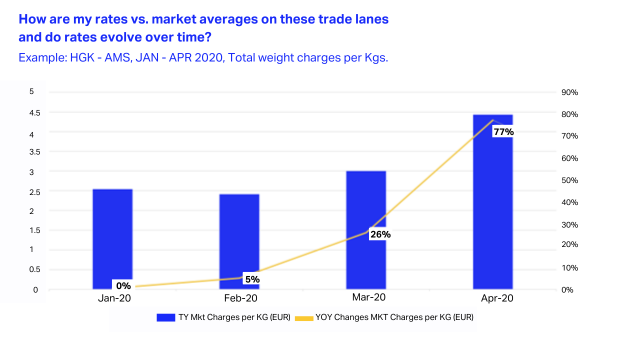
Source: IATA CargoIS
This gives the shipper a solid bird’s eye view of the shift, but they need to get more granular to make a final decision. They combine your desired metric to monitor the overall performance of your shipping strategy relative to market trends.

Source: IATA CargoIS
The graph shows the monthly market tonnage and market rate information for AMS- HKG/ CDG-HKG/FRA-HKG/MUC-HKG. It also shows the shipper's tonnage and rates on those TLS so that the user can compare their tonnage and rate vs. market to benchmark.
This information gives the shipper the knowledge and insight needed for better and more transparent negotiations with freight forwarders, leading to a more cost-effective and reliable supply chain.
Above and beyond business negotiations, data is an important asset for anyone tasked with building cost-effective strategies for their business. Air freight shipping is no different. Still, most shippers and manufacturers have particular and unique business needs.
A relevant and valuable source for air freight cargo should include relevant data on,
The secret to a successful strategy
The market can be unpredictable. Understanding market trends and leveraging the correct data will help you make appropriate choices, no matter how the industry changes.
Employing a data-driven approach to your air freight shipping ensures a more efficient and resilient supply chain that will save your business time and money.
Interested in developing a data-backed shipping strategy for your organization? IATA CargoIS can provide you with market insights that can help you reduce costs, establish reliable trade lanes and improve your negotiation power.